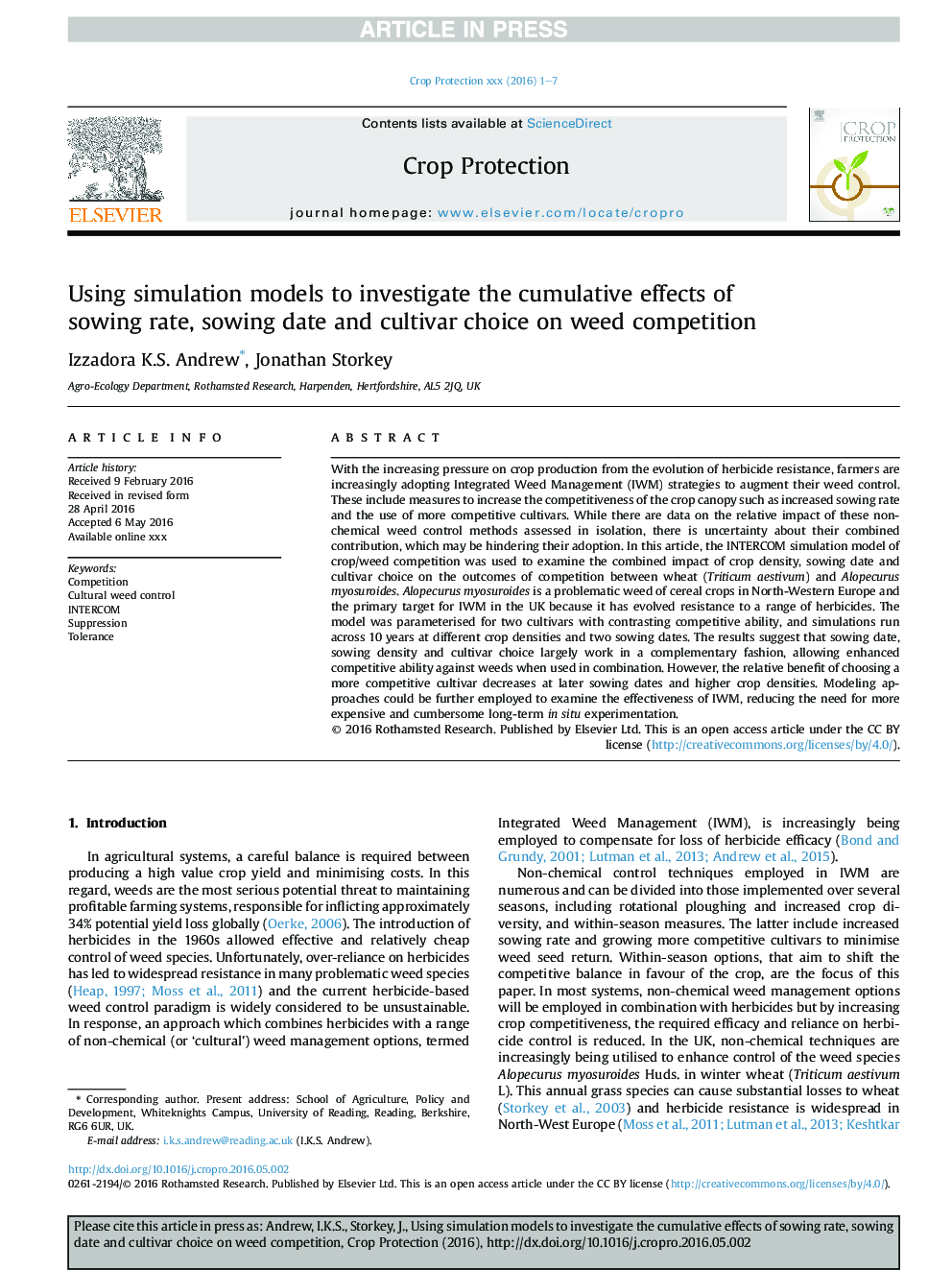| کد مقاله | کد نشریه | سال انتشار | مقاله انگلیسی | نسخه تمام متن |
|---|---|---|---|---|
| 5760849 | 1624292 | 2017 | 7 صفحه PDF | دانلود رایگان |
عنوان انگلیسی مقاله ISI
Using simulation models to investigate the cumulative effects of sowing rate, sowing date and cultivar choice on weed competition
ترجمه فارسی عنوان
با استفاده از مدل های شبیه سازی برای بررسی اثرات تجمعی میزان کاشت، تاریخ کاشت و انتخاب رقم بر رقابت علف های هرز
دانلود مقاله + سفارش ترجمه
دانلود مقاله ISI انگلیسی
رایگان برای ایرانیان
موضوعات مرتبط
علوم زیستی و بیوفناوری
علوم کشاورزی و بیولوژیک
علوم زراعت و اصلاح نباتات
چکیده انگلیسی
With the increasing pressure on crop production from the evolution of herbicide resistance, farmers are increasingly adopting Integrated Weed Management (IWM) strategies to augment their weed control. These include measures to increase the competitiveness of the crop canopy such as increased sowing rate and the use of more competitive cultivars. While there are data on the relative impact of these non-chemical weed control methods assessed in isolation, there is uncertainty about their combined contribution, which may be hindering their adoption. In this article, the INTERCOM simulation model of crop/weed competition was used to examine the combined impact of crop density, sowing date and cultivar choice on the outcomes of competition between wheat (Triticum aestivum) and Alopecurus myosuroides. Alopecurus myosuroides is a problematic weed of cereal crops in North-Western Europe and the primary target for IWM in the UK because it has evolved resistance to a range of herbicides. The model was parameterised for two cultivars with contrasting competitive ability, and simulations run across 10 years at different crop densities and two sowing dates. The results suggest that sowing date, sowing density and cultivar choice largely work in a complementary fashion, allowing enhanced competitive ability against weeds when used in combination. However, the relative benefit of choosing a more competitive cultivar decreases at later sowing dates and higher crop densities. Modeling approaches could be further employed to examine the effectiveness of IWM, reducing the need for more expensive and cumbersome long-term in situ experimentation.
ناشر
Database: Elsevier - ScienceDirect (ساینس دایرکت)
Journal: Crop Protection - Volume 95, May 2017, Pages 109-115
Journal: Crop Protection - Volume 95, May 2017, Pages 109-115
نویسندگان
Izzadora K.S. Andrew, Jonathan Storkey,
